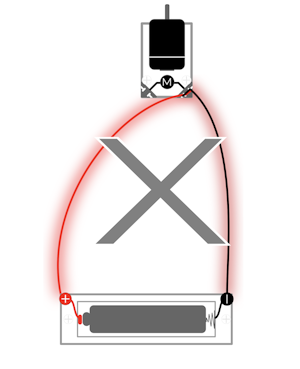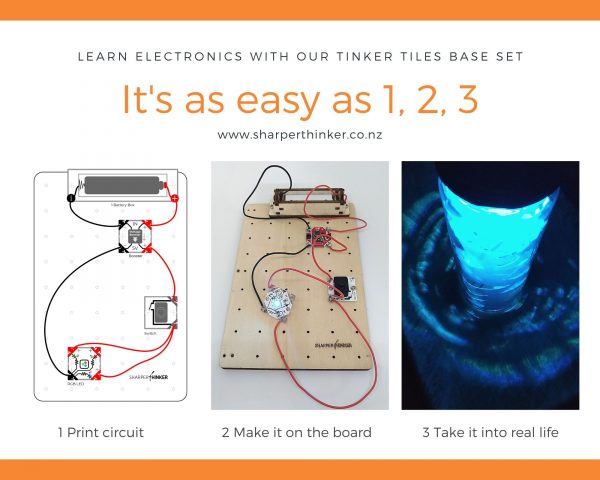If you are a teacher, caregiver or just wanting to get a headstart on learning basic circuits, try our beginner to intermediate circuit diagrams.
These are copyright to SharperThinker but free for non-commercial use. These circuit diagrams work best with our Tinker Tiles Base Set (available in our online shop).
Use the diagrams as a way to springboard students into their own real life projects!
Half of these diagrams are available, as well as project suggestions, in our free eBook: Wire Up Your World. Our second eBook is on the way so stay tuned.
Circuit 1
Motor and switch tiles connected in series with an AA battery.
Example project: Make an Art Spinner
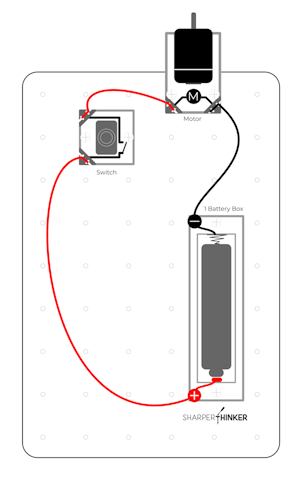
Circuit 2
Wire the motor in reverse so the shaft spins in the opposite direction.
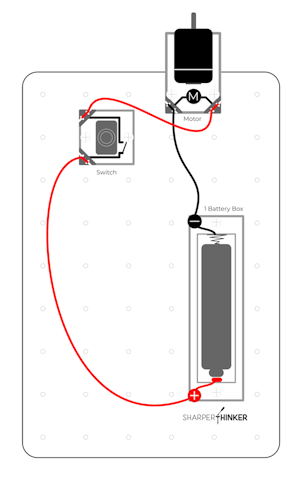
Circuit 3
How do I add an extra battery into my series circuit? Some projects need extra volts and each extra AA battery adds another 1.5v into your circuit.
Example project: Make a Lego Car Go
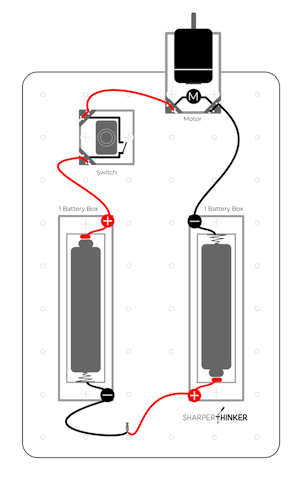
Circuit 4
How do I wire my batteries in parallel? Wiring your batteries like this will give your project more "push" but will run your batteries down much faster as both are being used at full capacity. Try your Lego car with this wiring.
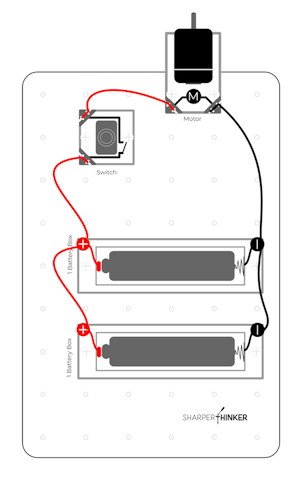
Circuit 5
Using a Booster Tile to run an LED. An LED needs approx 3volts to work and an AA battery only has 1.5v. Use this special Booster tile to enable you to make a torch circuit. More information about LEDs and resistors is coming soon in our next free eBook.
We use a low OHM resistor in our torch circuit: 6.8ohms
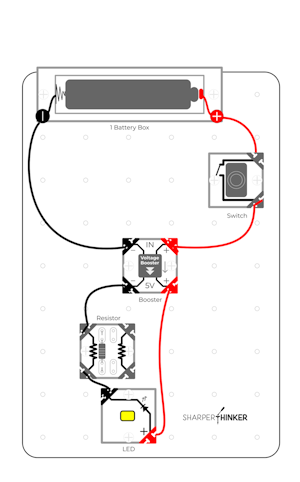
Circuit 6
Change the level of resistance in the resistor tile to watch your LED dim and brighten. There are two places for resistors in this tile and the Tinker Tiles Base Set gives you two tiles - that's four ways to experiment.
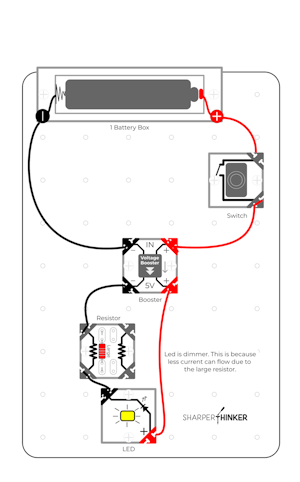
Circuit 7
Wire two motors in parallel. These motors will spin the same way and if you put them on a vehicle that will make it spin around and around.
You can see an example of this in our "Hack the Marshmallow Launcher" video.
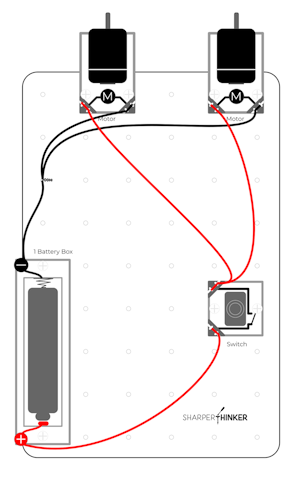
Circuit 8
Wire two motors in parallel, then make sure they are going in opposite directions!
If you then put the motors on either side of a vehicle, this will ensure it moves forward or backwards - instead of spinning.
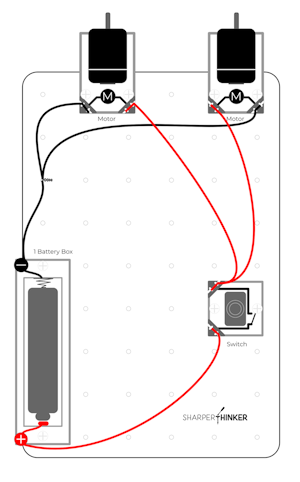
Circuit 9
Wire an RGB LED circuit using a SharperThinker Booster Tile. This allows your LED to run off an AA battery.
For more on LEDs, sign up to our newsletter so you know when our next free eBook is coming out.
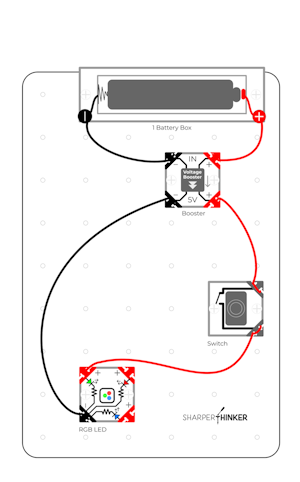
Circuit 10
Add a wire to the second colour in your RGB LED to make purple, aqua or another colour on the spectrum.
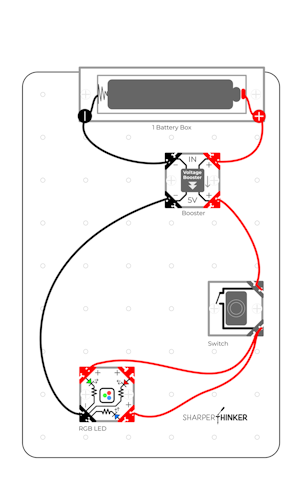
Circuit 11
Add resistor/s into the circuit to change the colours of the RGB LED. Experiment with the infinite range of colours you can make! The resistors "squish" the current so this changes the amount of colour in your LED.
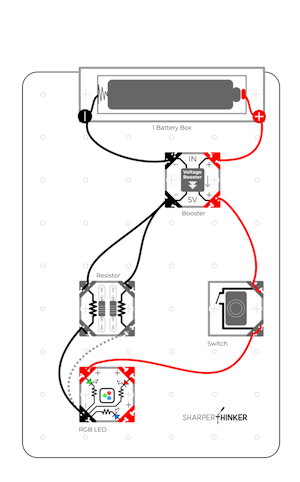
Circuit 12
Whoops, this person has accidentally got the battery box wired to itself. This means the energy has nowhere else to go and is now rapidly heating the wires and possibly melting the springs in your battery box.
Always check your wiring and if anything feels hot or starts to smell funny - disconnect and double check.
